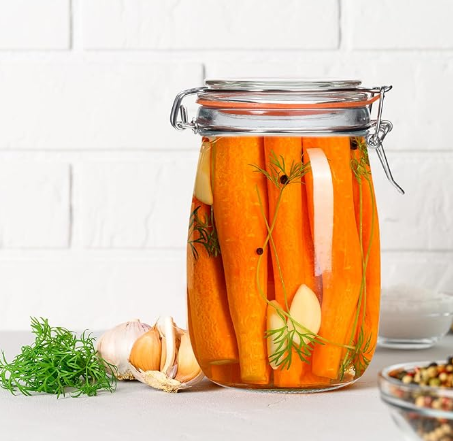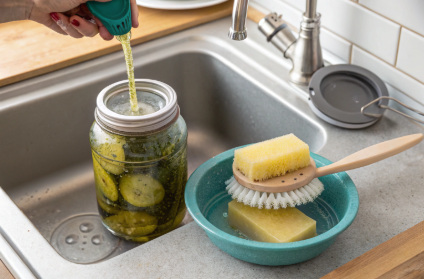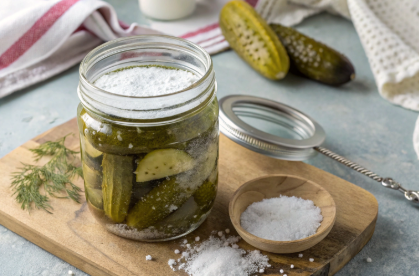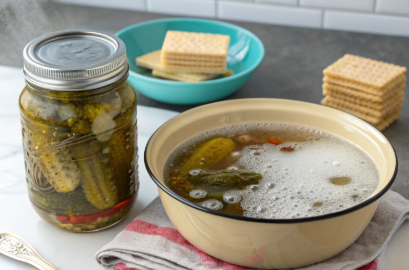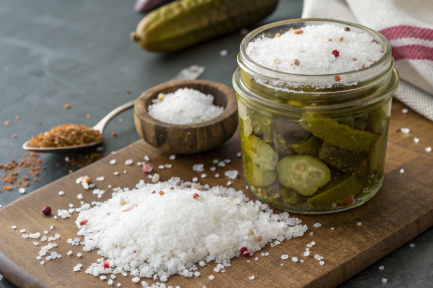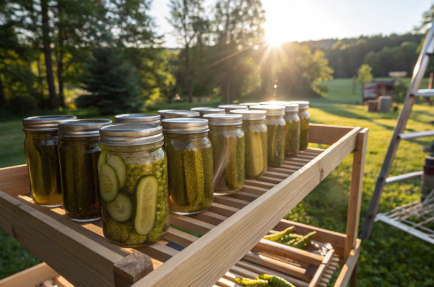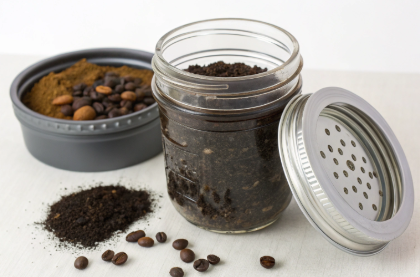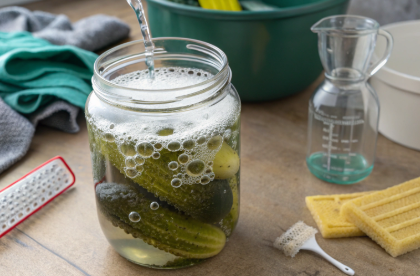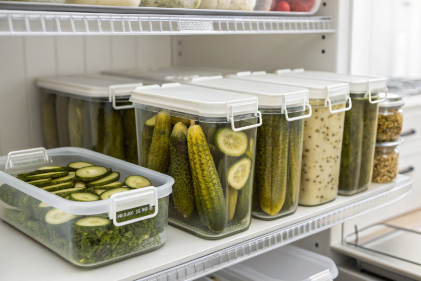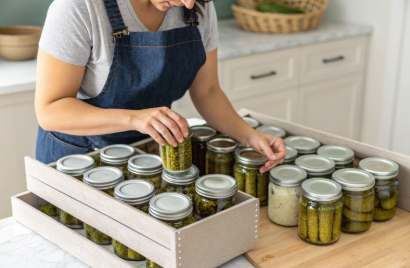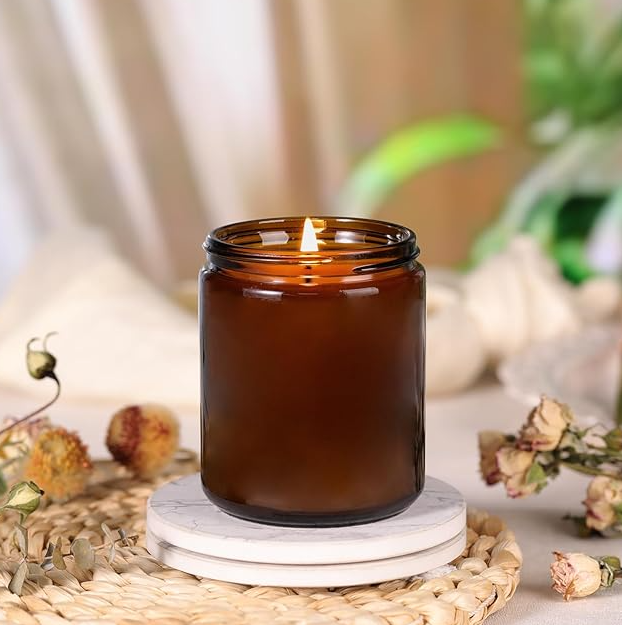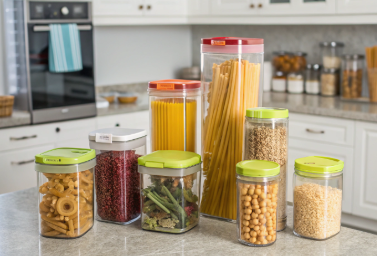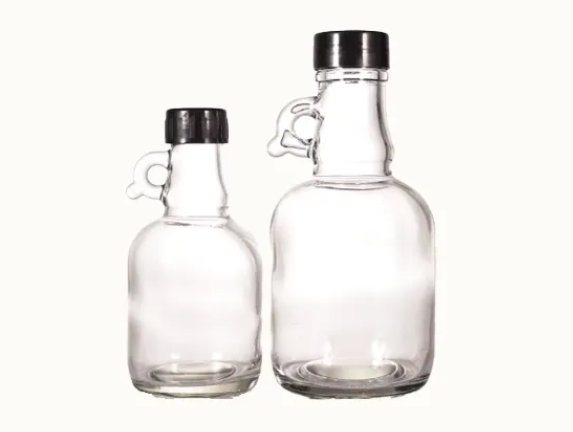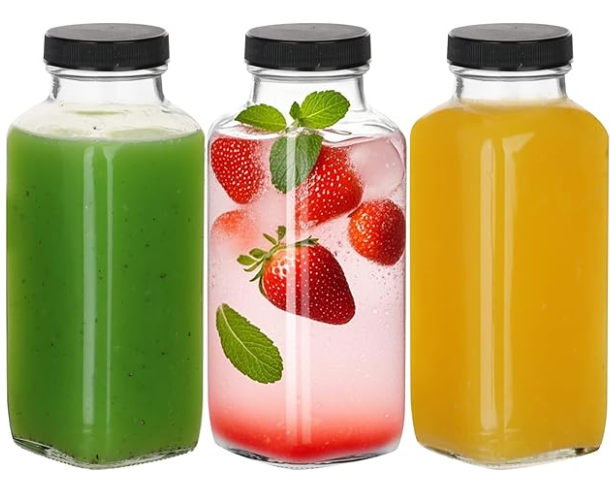Pickle jars are a beloved kitchen essential, preserving the tangy, flavorful pickles that enhance countless meals. However, once emptied, these jars often retain stubborn and unpleasant odors that can be challenging to eliminate. Whether you plan to reuse your jars for new pickles, store other foods, or repurpose them creatively, removing the lingering pickle smell is essential to maintaining freshness, hygiene, and versatility.
At Paupacking, accessible atwww.paupacking.com, we specialize in premiumPickle Jarsdesigned for durability, airtight sealing, and easy cleaning. Even with high-quality jars, proper cleaning is key to eliminating persistent odors. This comprehensive guide explores a variety of effective methods, tips, and best practices to thoroughly remove smells from pickle jars, extending their usability and keeping your kitchen fresh.
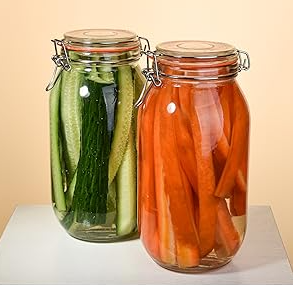

1. Understanding Why Pickle Jars Retain Odors
Before exploring cleaning techniques, it is important to understand why pickle jars hold onto smells so tenaciously. Pickles are preserved in brine solutions rich in vinegar, salt, and aromatic spices such as garlic, dill, and mustard seeds. These ingredients contain volatile compounds that cling to surfaces and can be difficult to fully remove.
The Role of Jar and Lid Materials
While glass itself is non-porous and does not absorb odors, the threads of the jar and especially the sealing materials in the lids—often rubber or plastic gaskets—can trap odors. These materials are slightly porous and can absorb the vinegar and spice aromas, which then linger long after the jar is emptied.
Residual Acidity and Microbial Factors
The acidic nature of pickle brine can leave behind residues that continue to emit odors. Additionally, microscopic residues of food and brine can harbor bacteria or yeast, which may produce unpleasant smells if not thoroughly cleaned.
Paupacking’s Pickle Jars Designed to Minimize Odor Retention
Paupacking’sPickle Jarsfeature high-quality borosilicate glass and carefully designed lids with durable seals that minimize odor absorption. However, even the best jars require proper cleaning to ensure complete odor removal.
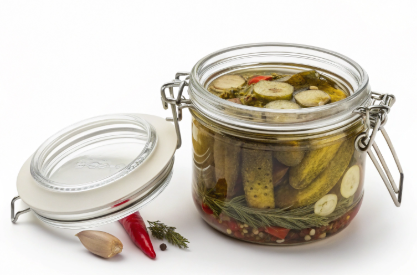
2. Basic Cleaning: Soap, Warm Water, and Mechanical Action
The foundation of odor removal is thorough cleaning with warm water and dish soap.
Step-by-Step Basic Cleaning Process
-
Remove all pickle remnants:Use a spatula or spoon to scrape out any leftover pickle pieces or brine.
-
Soak the jar and lid:Fill the jar with warm water mixed with a mild dish soap and submerge the lid separately. Let both soak for 20-30 minutes to loosen residues.
-
Scrub thoroughly:Use a bottle brush to clean the interior surfaces, paying special attention to the threads and corners. Use a small brush or toothbrush to clean lid seals and grooves.
-
Rinse thoroughly:Rinse the jar and lid under running water to remove all soap and loosened residues.
-
Dry completely:Air dry the jar and lid fully before storage or reuse.
Why Basic Cleaning May Not Be Enough
While soap and water remove surface residues and reduce odors, they often cannot eliminate deep-set or stubborn smells embedded in the lid seals or microscopic crevices. Additional treatments are usually necessary for complete deodorization.
3. Baking Soda: The Natural Odor Neutralizer
Baking soda is widely regarded as one of the most effective natural deodorizing agents.
How Baking Soda Works
Baking soda (sodium bicarbonate) neutralizes acidic and sulfurous odors by chemically absorbing and neutralizing volatile compounds. It is safe, non-toxic, and inexpensive, making it ideal for kitchen use.
Baking Soda Treatment Process
-
Make a baking soda paste:Mix three parts baking soda with one part water to form a thick paste.
-
Apply inside the jar and lid:Use a sponge or cloth to spread the paste over all interior surfaces, including the lid and seals.
-
Let it sit:Allow the paste to rest for 1-2 hours or overnight for stronger odors.
-
Scrub again:Use a brush to scrub the jar and lid, loosening trapped residues.
-
Rinse thoroughly:Rinse well under warm water and dry completely.
Additional Tips
For extra effectiveness, sprinkle dry baking soda inside the jar and leave it open overnight before rinsing. This dry method absorbs odors without moisture.
4. Vinegar Soak: Harnessing Acidity to Break Down Odors
White distilled vinegar is a powerful natural deodorizer and cleaner.
Why Vinegar Is Effective
Vinegar’s acetic acid breaks down mineral deposits, dissolves organic residues, and neutralizes odors by altering the chemical composition of odor-causing molecules.
Vinegar Soak Method
-
Fill the jar:Mix equal parts white vinegar and warm water and fill the jar.
-
Soak the lid separately:Submerge the lid in vinegar solution in a separate container.
-
Let soak:Leave both to soak for 4-12 hours or overnight.
-
Rinse thoroughly:Wash with dish soap and warm water to remove vinegar smell.
-
Dry fully:Air dry in a well-ventilated area.
Combining Vinegar with Baking Soda
For tough odors, after vinegar soaking, sprinkle baking soda inside the jar and allow the fizzing reaction to neutralize residual smells before rinsing.
5. Salt and Abrasives: Physical Odor Removal
Sometimes chemical neutralization is not enough, and physical abrasion is necessary.
Using Salt as a Natural Abrasive
-
Add coarse salt:Sprinkle 1-2 tablespoons of coarse sea salt inside the jar.
-
Add a small amount of warm water:Create a gritty slurry.
-
Shake vigorously:Seal the jar and shake for 30-60 seconds to scrub interior surfaces.
-
Use a brush for stubborn spots:Scrub jar walls and lid seals with salt and a sponge or brush.
-
Rinse thoroughly:Remove all salt and residues.
Why Abrasion Helps
Salt physically scrapes off residues and biofilms where odor molecules cling, complementing chemical treatments.
6. Sunlight and Air Drying: Natural Freshening
Sunlight is a natural deodorizer and sanitizer.
How Sunlight Removes Odors
Ultraviolet (UV) rays from sunlight break down organic molecules responsible for odors. Fresh air circulation helps dissipate volatile compounds and dries residual moisture that can cause smells.
Sunlight Treatment Steps
-
Place jars and lids in direct sunlight:Leave open in a sunny, well-ventilated spot for 1-3 days.
-
Rotate jars periodically:Ensure all surfaces receive sunlight.
-
Repeat as necessary:Persistent odors may require multiple sessions.
Benefits Beyond Odor Removal
Sunlight also helps sanitize jars by reducing microbial load, making them safer for reuse.
7. Activated Charcoal and Coffee Grounds: Absorptive Solutions
Activated charcoal and coffee grounds are excellent at absorbing odors.
How They Work
Both materials have porous structures that trap odor molecules physically, removing smells from the air inside jars.
Usage Instructions
-
Fill the jar:Place a small amount of activated charcoal or dry coffee grounds inside.
-
Seal and wait:Close the jar and leave for 24-48 hours.
-
Remove and clean:Discard charcoal or coffee grounds and wash jar again.
Practical Tips
Use fresh, dry charcoal or coffee grounds for best results. Avoid wet or used grounds to prevent mold.
8. Alcohol and Bleach Treatments: For Deep Cleaning
For stubborn odors resistant to natural methods, chemical disinfectants may be necessary.
Rubbing Alcohol Treatment
-
Swirl isopropyl alcohol (70-90%) inside the jar:Ensure all surfaces are coated.
-
Let sit for 10-15 minutes:Alcohol evaporates quickly, killing odor-causing microbes.
-
Rinse thoroughly:Wash with soap and water to remove residue.
Bleach Soak Method
-
Prepare diluted bleach solution:Mix 1 tablespoon of bleach per gallon of water.
-
Soak jars and lids for 10 minutes:Ensure complete submersion.
-
Rinse thoroughly:Multiple rinses are essential to remove bleach residues.
-
Dry completely:Air dry in a ventilated area.
Safety Precautions
Always wear gloves and work in a well-ventilated area when using bleach or alcohol. Never mix bleach with ammonia or other cleaners.
9. Preventing Odors: Best Practices for Pickle Jar Reuse
Prevention is the best way to avoid stubborn odors.
Tips to Minimize Odor Retention
-
Clean jars immediately after use:Don’t let residues sit and dry.
-
Use Paupacking’s high-qualityPickle Jars:Designed for easy cleaning and odor resistance.
-
Store jars open and dry:Allow ventilation between uses.
-
Replace worn lids:Old or damaged lids can trap odors.
-
Avoid cross-contamination:Use separate jars for strongly scented foods.
Proper Storage Conditions
Keep jars in cool, dry, and dark places to prevent microbial growth and odor development.
10. Paupacking’s Pickle Jars: Designed for Freshness and Easy Maintenance
Paupacking’sPickle Jarscombine premium borosilicate glass with airtight, durable lids engineered to resist odor absorption. Our jars feature:
-
Wide mouths for easy cleaning and filling
-
High-quality seals to lock in freshness and prevent leaks
-
Stylish designs that enhance kitchen aesthetics
-
Durable materials that withstand repeated cleaning and use
Choosing Paupacking ensures you have pickle jars that are easy to maintain and less prone to retaining odors, making your kitchen more hygienic and your storage more versatile.
Table: Comparison of Odor Removal Methods for Pickle Jars
| Method | Effectiveness | Time Required | Materials Needed | Notes |
|---|---|---|---|---|
| Soap and Warm Water | Basic cleaning | 15-30 minutes | Dish soap, warm water | Good first step |
| Baking Soda Paste | High for odors | 15 min to overnight | Baking soda, water | Natural deodorizer |
| Vinegar Soak | High for acidic smells | Several hours to overnight | White vinegar, water | Dissolves residues |
| Salt Abrasion | Medium to high | 5-10 minutes | Coarse salt, water | Physical odor removal |
| Sunlight Exposure | Medium | 1-3 days | Sunlight, airflow | Natural deodorizer |
| Activated Charcoal | High | 24-48 hours | Activated charcoal or coffee grounds | Absorbs odors |
| Alcohol Rinse | High for stubborn odors | 10-15 minutes | Isopropyl alcohol | Use with caution |
| Bleach Soak | Very high | 10 minutes | Diluted bleach solution | Use with caution, rinse well |
Conclusion
Removing the smell from pickle jars is a common challenge, but with the right methods and care, it is entirely achievable. From natural solutions like baking soda and vinegar to sunlight and activated charcoal, there are numerous effective ways to deodorize your jars.
Paupacking’sPickle Jarsare designed to facilitate easy cleaning and minimize odor retention, ensuring your jars remain fresh and ready for reuse. Combining quality packaging with proper cleaning techniques extends the life of your jars, reduces waste, and supports a cleaner kitchen environment.
Explore Paupacking’s full range of pickle jars atwww.paupacking.comand discover how our premium jars can simplify your kitchen storage while maintaining freshness and hygiene.
For personalized advice, bulk orders, or customization options, Paupacking’s expert team is ready to assist you in selecting the perfect pickle jars tailored to your needs.




